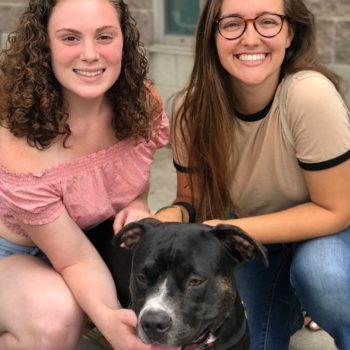Space was getting tight in all three of Animal Care Centers of New York City’s shelters. They had just completed a successful adoption event, but their dog kennels remained stubbornly full. Staff felt as though they’d saturated the local adoption market and multiple pleas for fosters hadn’t been as successful as they had hoped. They needed to free up kennel space fast. But how could they do it?
They created the “Straycation” program. Specifically, they asked caregivers to take a dog home for two nights over the Fourth of July holiday. “Straycation is a short-term foster program that we originally intended to have as a recurring event around long holiday weekends,” says Aurora Velazquez, Chief Operating Officer at Animal Care Centers of New York City. “Our marketing team came up with the Straycation promo to take advantage of people who have the time off but don’t necessarily go on vacation and instead have a staycation, remaining in the city.”
Over the course of the next three days, NYCACC sent 55 dogs out with 54 Straycation fosters. Of these, 43 fosters were completely new supporters of NYCACC and six were current volunteers who were re-engaged as fosters. Not only that, but 10 dogs were adopted during or directly after their Straycation, six of which were by their fosters. Seven more dogs have pending adoptions by their fosters!
“The response was really great,” says Velazquez. “We had so many people engage that had never been to our shelters before. It really seemed to resonate with the public.”
Here are some important takeaways from their super-successful program’s launch:
Messaging matters. Market research suggests that the public has some misconceptions about what ‘foster’ means. NYCACC intentionally dropped the use of the term ‘foster’ in hopes that it made it easier for the public to grasp what they were asking for, while avoiding what people may perceive as barriers.
Be organized and efficient. People responded very quickly, and staff needed to be ready to engage them just as fast. Velazquez tells us, “We had one place all inquiries went, and two people handling those inquiries. We had point people, including volunteers in each shelter to help Straycation fosters specifically and had supplies and to-go bags ready and waiting. We simplified our process to make it as easy as possible for fosters – essentially we told them to fill out an application and walk in and staff on the back-end would activate their applications and get their information into our system.”
Good marketing is critical. Having bright, engaging graphics and a cute title for your program can go a long way in getting your community excited to participate. “Having a fun title for the program made it more compelling for those involved to share their Straycation photos on social media,” Velazquez says. “We had more shares and tags on Instagram stories than ever before. This means that we potentially reached a whole new audience of potential adopters and gained more followers as a result.”
Having leadership roll up their sleeves helped with staff buy-in. “Essentially, our Foster and Marketing team put the promotion together on July 1 with the callout for pet pickup on July 3,” says Velazquez. “With such a short turnaround time we didn’t have a lot to work with in terms of moving staff around or getting messaging out to our own staff. It was a little chaotic at times and frustrations ran high but the team came together and made it successful. I think having members of our leadership involved on the front lines – answering emails, helping clients, working the floor in the shelters was a big help and demonstrated to the staff that we were all in this together.”
Plan a debrief afterward. Velazquez says, “Knowing that it was a little chaotic during the initial launch, we committed to a debrief to make things run more smoothly going forward. During the debrief we discussed making sure staff are prepared with talking points for when clients come in and making a short video that people can watch and get all the answers to their questions if staff are already helping another client.”
If you’re thinking of starting a sleepover program like Straycations, “Be prepared for it to become part of your repertoire,” says Velazquez. “We had a plan that this would just be for long holiday weekends but after the weekend ended, people kept coming in. I think we had something like six days between the Straycation and the first internal email that said, ‘I think we need to accept Straycations are happening!’”

